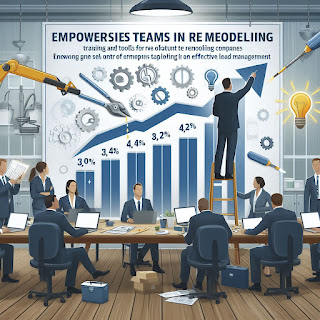5 Common Estimating Mistakes to Avoid in Remodeling and Construction
Estimating costs accurately is essential in remodeling and construction projects. Whether you're a seasoned contractor or a DIY enthusiast, miscalculations can lead to budget overruns, delays, and dissatisfaction. To ensure your project stays on track financially, it's crucial to steer clear of common estimating mistakes. In this article, we'll highlight five of these mistakes and offer tips on how to avoid them.
Underestimating Materials Costs: One of the most prevalent errors in estimating is underestimating the cost of materials. This can occur due to various factors, such as failing to account for fluctuations in material prices, overlooking the need for specific materials, or relying on outdated pricing information. To avoid this mistake, research current material costs thoroughly, consider potential price changes, and always add a buffer to your estimates to account for unforeseen expenses.
Ignoring Hidden Expenses: Remodeling and construction projects often involve hidden expenses that are easy to overlook during the estimation process. These can include permit fees, subcontractor costs, equipment rentals, and disposal fees. Ignoring these expenses can significantly impact your budget and timeline. Make sure to conduct a comprehensive assessment of all potential costs associated with the project and factor them into your estimates from the outset.
Failing to Account for Labor Costs: Labor costs are another crucial aspect of estimating that is frequently underestimated. It's essential to accurately assess the amount of time and manpower required for each phase of the project and factor in the associated labor costs accordingly. Additionally, be sure to account for overtime, unexpected delays, and any specialized skills that may command higher wages. By properly accounting for labor costs, you can avoid budgetary surprises down the line.
Overlooking Scope Creep: Scope creep refers to the gradual expansion of a project's scope beyond its original boundaries. This often occurs due to client requests for additional features or changes to the initial plan. While accommodating client needs is important for customer satisfaction, failing to properly manage scope creep can wreak havoc on your budget and timeline. To avoid this mistake, establish clear project objectives and communicate them effectively with all stakeholders. Additionally, document any changes to the scope of work and adjust your estimates accordingly to reflect the added costs and time requirements.
Relying Too Heavily on Rules of Thumb: While rules of thumb can be useful for rough estimates, relying too heavily on them can lead to inaccuracies. Every project is unique, and factors such as location, project complexity, and materials used can significantly impact costs. Instead of relying solely on generic rules of thumb, take the time to thoroughly analyze each project's specific requirements and develop customized estimates based on accurate data and detailed calculations.
Accurate estimating is essential for the success of remodeling and construction projects. By avoiding common estimating mistakes such as underestimating materials costs, ignoring hidden expenses, failing to account for labor costs, overlooking scope creep, and relying too heavily on rules of thumb, you can ensure that your project stays on budget and on schedule. Remodel Cloud was constructed to help avoid the common pitfalls of estimating and ensure your business can communicate effectively with stakeholders, develop detailed estimates, and set your project up for success from the start.



Comments
Post a Comment